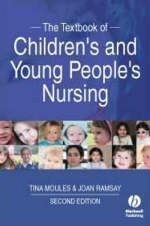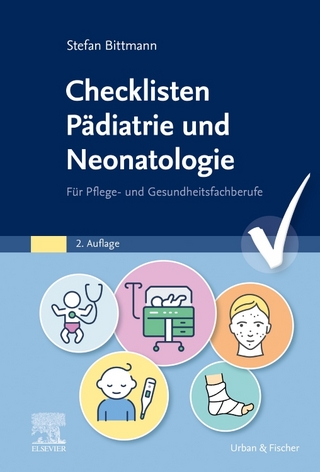
The Textbook of Children's and Young People's Nursing
Wiley-Blackwell (Verlag)
978-1-4051-7093-2 (ISBN)
Children's and young people's nursing has changed and developed in recent years in response to a number of government reports .e.g. Children’s National Service Framework, the Kennedy report, Every Child matters: Change for children, The Children Act 2004. The second edition of this successful textbook embraces these changes and combines experience, clinical practice, education and research to provide an invaluable, innovative and authoritative guide for all child nursing students and newly qualified children’s nurses.
Covering all ages and range of specialities, this evidence-based and accessible text fully explores all aspects of nursing care. Divided into 3 parts, The Textbook of Children's and Young People's Nursing, 2nd edition covers:
Health in Childhood- looking at the dynamics of the family, development in children and the promotion of child health
Health and Deviations in Childhood –focusing on the care of sick children and its implications on the family. Includes new chapters on children’s voices and children and adolescents with problems related to sexuality
Professional Issues in Child Care – exploring the scope of children’s nursing, legal and ethical issues, management issues for professional practice as well as considering the future of children’s nursing.
Study activities, key points and summary boxes are featured throughout to ensure that the reader learns about and critically reflects on all aspects of children’s nursing in wide variety of settings.
Tina Moules is Director of Research at the Anglia Polytechnic University, UK. Joan Ramsay is Associate Director of Nursing, Women & Children's Division, Taunton & Somerset NHS Trust.
PART 1: HEALTH IN CHILDHOOD. Module 1: Understanding families.
Introduction.
1. The family.
2. Roles and relationships.
3. Functions of the family.
4. Child-rearing practices.
References.
Module 2: The growing child.
Introduction.
1. The nature of childhood.
2. Growth and maturation.
3. Theoretical perspectives -- cognitive development.
4. Theoretical perspectives -- the social world of the child.
5. Play and education.
References.
Module 3: Promoting child health.
Introduction.
1. Trends in child health.
2. Health.
3. Children’s perceptions of health.
4. Developing strategies for health.
5. Role of children’s nurses in child health promotion.
6. Aspects of health in childhood.
References.
PART 2: HEALTH AND DEVIATIONS IN CHILDHOOD.
Module 4: Understanding families in stress.
Introduction.
1. The influence of family stress upon the child.
2. Hospitalisation and illness.
3. Death and the family.
4. Chronic illness -- family stress and coping.
5. Living with a disability.
6. Violence in the family.
References.
Module 5: Principles of caring for sick children.
Introduction.
1. Hearing children’s voices in NHS service delivery and evaluation.
2. Creating an appropriate hospital environment for children.
3. Preparation for hospital and procedures.
4. Assessment of the sick child.
5. Day care.
6. Emergency care.
7. Administration of medicines.
8. Providing nutrition.
9. Maintaining fluid balance.
10. Caring for children in pain.
11. The role of the nurse as a surrogate.
12. Community nursing.
13. Pre- and post-operative care.
14. Aspects of paediatric intensive care.
15. Caring for the dying child and the family.
References.
Module 6: Specific care of sick children.
Introduction.
1. Principles of care -- children with blood disorders.
2. Principles of care -- children with problems of bones, joints and muscles.
3. Principles of care -- children with a circulatory disturbance.
4. Principles of care -- children with a metabolic or endocrine disorder.
5. Principles of care -- children with eye, ear, nose and throat disorders.
6. Principles of care -- the child with altered gastro-intestinal function.
7. Principles of care -- children with genito-urinary problems.
8. Principles of care -- children with problems related to the immune system.
9. Principles of care -- children with a neurological problem.
10. Principles of care -- children with altered breathing.
11. Principles of care -- children with skin disorders.
12. Mental health in childhood.
13. Care of the sick and preterm newborn.
14. Principles of care -- children undergoing cytotoxic treatment and radiotherapy.
15. Principles of care -- children and adolescents with problems related to sexuality.
References.
PART 3: PROFESSIONAL ISSUES IN CHILD CARE.
Module 7: The development and process of children’s nursing.
Introduction.
1. The history of children’s nursing.
2. Roles of the children’s nurse.
3. Models of nursing -- useless theory or an aid to practice.
4. Models of children’s nursing.
5. Family-centred care.
6. The nurse as a developing professional.
7. Children’s nursing in a multi-cultural society.
8. The future of children’s nursing.
References.
Module 8: Legal and ethical issues.
Introduction.
1. Consent to treatment.
2. Children’s Act 1989.
3. Confidentiality.
4. Research.
References.
Module 9: Managing professional practice.
Introduction.
1. Discharge planning.
2. The nurse as leader.
3. The organisation of patient care.
4. Standard setting and audit.
5. Work force allocation.
6. Risk management.
References.
Index
| Erscheint lt. Verlag | 12.11.2007 |
|---|---|
| Verlagsort | Hoboken |
| Sprache | englisch |
| Maße | 191 x 249 mm |
| Gewicht | 1687 g |
| Themenwelt | Medizin / Pharmazie ► Pflege ► Kinderkrankenpflege |
| ISBN-10 | 1-4051-7093-X / 140517093X |
| ISBN-13 | 978-1-4051-7093-2 / 9781405170932 |
| Zustand | Neuware |
| Haben Sie eine Frage zum Produkt? |
aus dem Bereich


